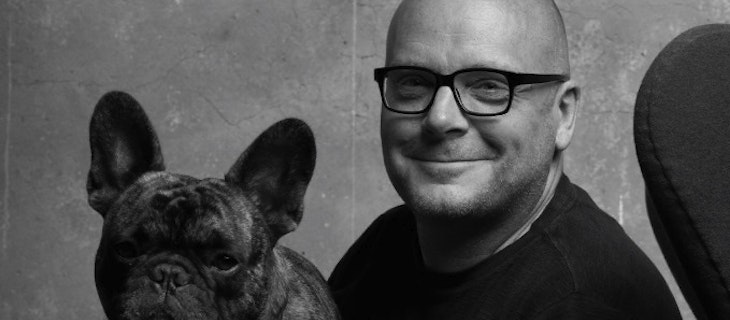
Unleashing creativity: A psychological approach
Forcing a good idea can feel like a jarring exercise, especially when lacking in inspiration or motivation. But by taking a closer look at how the mind works, you can harness your brain power to unleash that creative energy.
Some people find their creative flow in their studio, others in less deliberate areas like in the car or shower. Understanding how we get to those lightbulb moments requires some knowledge about how the brain makes it happen.
How the creative mind works
Creativity is all in your head, or more specifically, a region of the brain dubbed 'The Imagination Network'. This is responsible for constructing memories, predicting the future, self-reflection plus empathy of others, which interacts with The Executive Network (problem-solving and logic) and The Salience Network (streams of consciousness and attention delegation). Research shows that the Imagination Network appears most active when one is engaged in self-generated cognition – a fancy way of saying daydreaming or letting your mind wander off.
Getting in the idea zone
With all these functions running at once, your brain (in its finite power) actively powers what it thinks is most important – usually a tug of war between logic and creativity. So to increase your creative flow, it's fair to assume you need to take some energy from the executive network and increase that of the Imagination and Salience Networks.
Five steps to make it happen
In 1939, legendary creative James Webb Young wrote a book called 'A Technique for Producing Ideas' where he outlined his two keys to creativity:
- An idea is nothing more than a new combination of old elements.
- The ability to generate new ideas depends on seeing relationships between different elements. (in this case, that of the different parts of the brain.
Young then laid out five steps to come up with new ideas. When you apply the above knowledge of your inner mind into it, you have one recipe for idea success.
Step One: Gather Raw Materials.
For Young, there were two types of information gathering:
- Specific: All the information relevant to your problem, which could be information regarding a product or the audience to which you’re talking to.
- General: Any bit of information about life and events. Young likens your information stash to a kaleidoscope – the more glass in the device, the greater possible number of different patterns and ideas. The more things we have in there, the more ways we can combine them.
Here, you’ll need to engage your Executive Network by focusing in on all the specific sources of information to your problem (research, product features and interviews) while keeping your general sources of information (magazines, RSS feeds, and social media feeds) structured and organised.
Step Two: Digest The Material.
In this stage, you take all the facts you’ve previously gathered and examine them; running them over in your mind, combining it with other facts, seeing how they fit. Note down any tentative ideas that pop up.
Again, keep that Executive Network firing. This intentional idea scanning needs focus, so here’s where you turn the music down and keep distractions to a minimum. A clean desk or well-filed Dropbox Folder might help here.
Step Three: Unconscious Processing.
Drop the whole problem from conscious thought. This is letting the Imagination Network take over in your subconscious and dreaming up ANY solution, regardless of the parameters. How do you get to this point? Do something that makes you feel relaxed and lets your mind wander, like a walk, a bath, or a nap.
Step Four: The A-Ha Moment.
This is the moment when the idea finally emerges. It could be while shaving, showering, or half-asleep, but it’s any time when you’re not directly focused on the task and your Imagination Network takes the hard work you’ve done so far, combines it, and finds the solution for you.
Step Five: Idea Meets Reality.
Once the idea emerges, you’ll need to expose it to the cold light of day. Does it solve the challenges of the problem? Is it feasible? Will the client approve it? Bring back that Executive Network, apply the rules to the solution, and voila! There’s your idea.
With a little mind-hacking and some creative exercise, you’ll have that unicorn sorted in no time.


